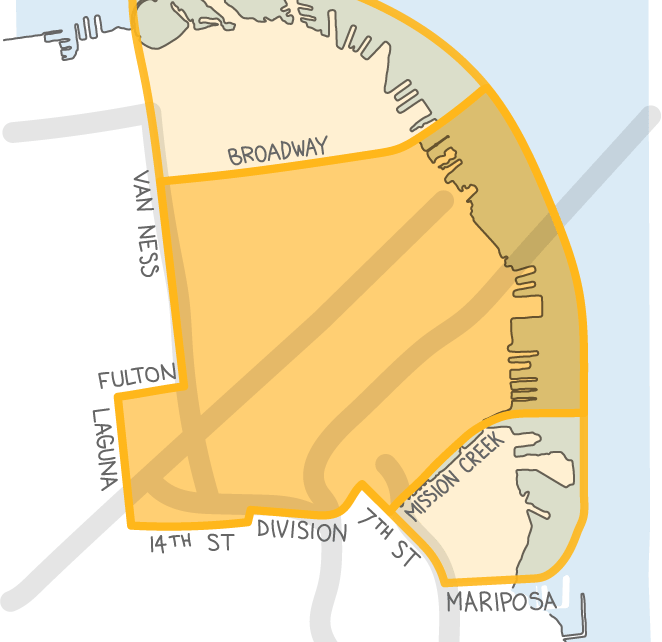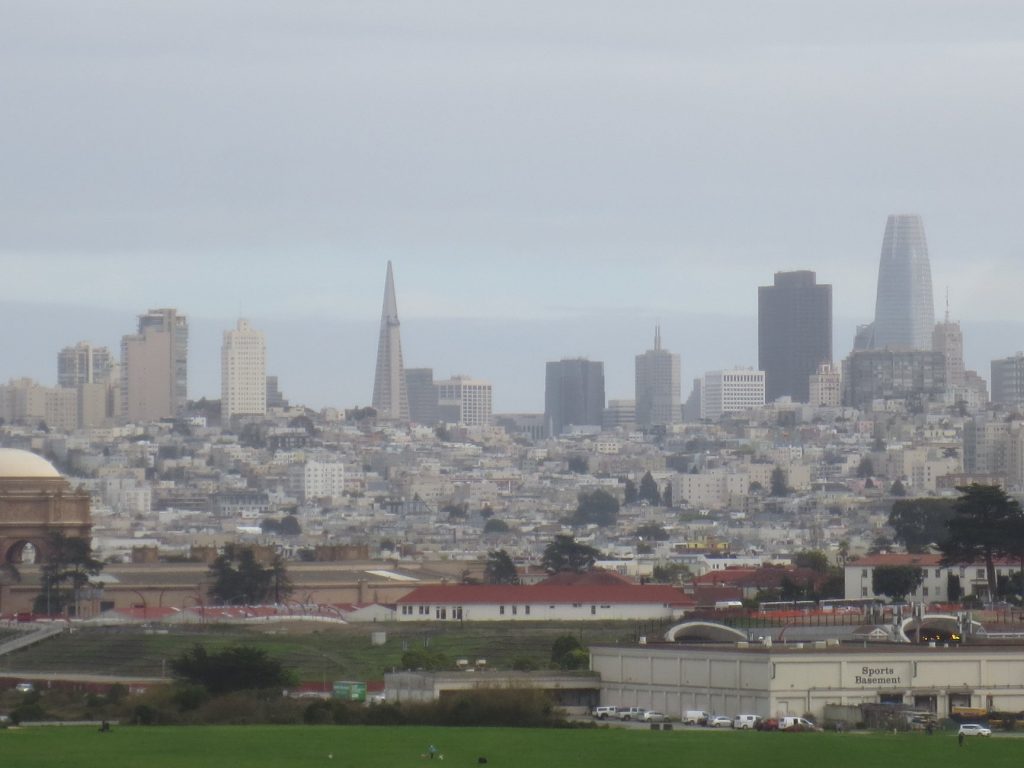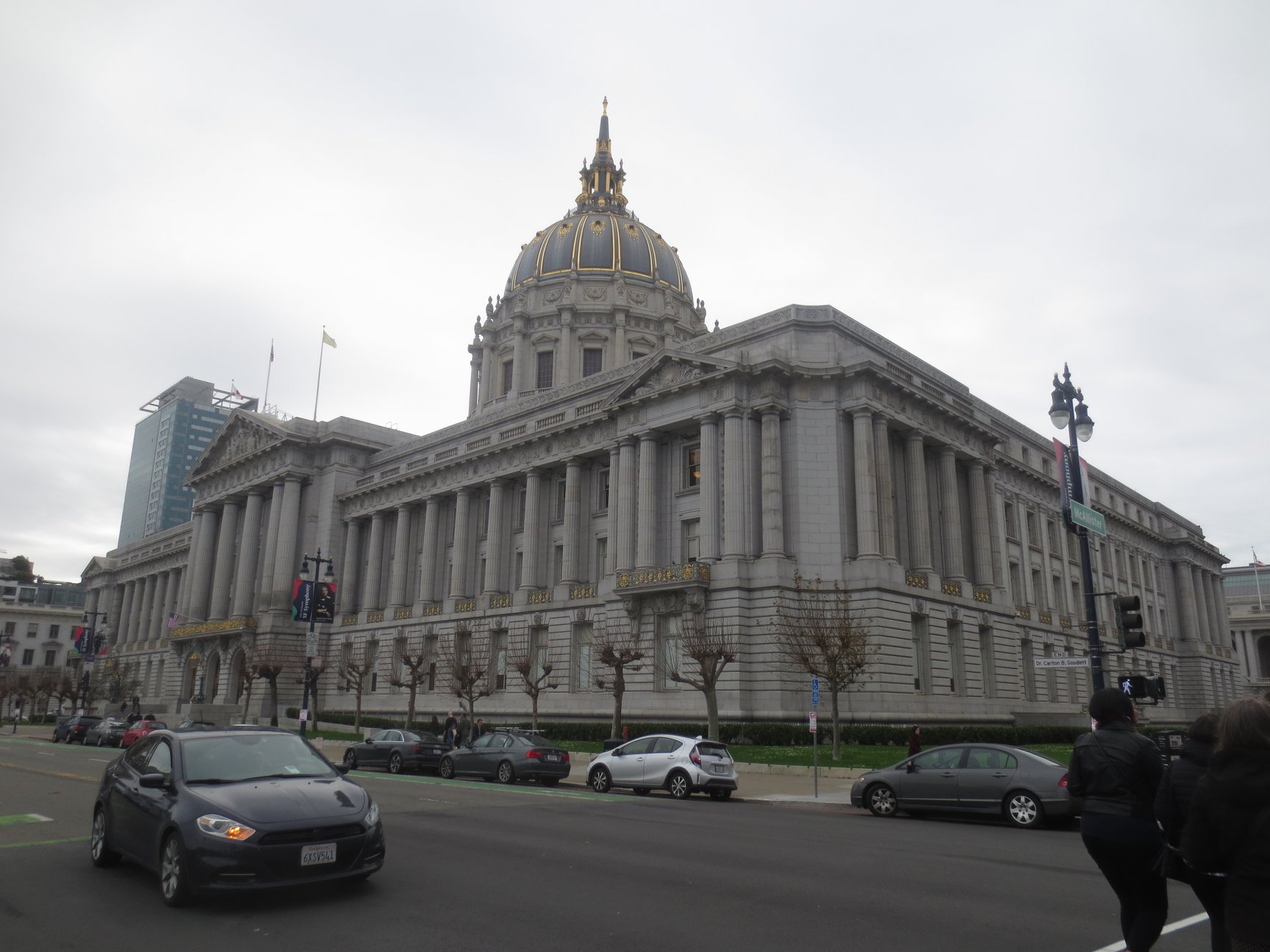
Proposed San Francisco Congestion Pricing Areas (Photo: SFCTA.org)
San Francisco Puts Forward New ‘Congestion Pricing’ Plan For Parts of the City
If approved by Supervisors, plan could be implemented in city within three to five years
By Evan Symon, July 27, 2021 11:18 am
On Monday, the San Francisco County Transportation Authority (SFCTA) released its latest plan to reduce traffic congestion in the city by charging a per-vehicle congestion fee.

According to the most recent proposal by the Authority’s Downtown Congestion Pricing Study team, the standard price to enter the pricing zones would be $6.50. However, this price would be highly variable, with a sliding payment scale for those who fall in between: commuters making $100,000 or more a year paying the full price, those making under $46,000 a year not paying at all. Other discounts to possibly reduce the cost even more might also be added, such as for disabled drivers, drivers who already paid bridge tolls entering the city, and residents who happen to reside in the pricing zones.
Two pricing zones are currently being looked at. One zone would cover the downtown area, branching out to include famed areas such as the Financial District, Chinatown, and the Tenderloin. The other larger zone would include an area to the north, rounding up areas such as North Beach, Russian Hill, and Fisherman’s Wharf, as well as another area to the south.
Charges to enter these areas would only apply on peak weekday times, with the fee to be implemented for vehicles entering between 6:00 a.m. and 9 a.m., and then between 3:30 p.m. and 6:30 p.m. More routine services such ride-share vehicles would be added to the fare, but taxis would be exempt. Delivery vans and other similar services were not mentioned, putting into question whether fees would be carried over to the customer in delivery scenarios.
“Since you are charging a fee it disincentives people to drive into an area at a certain time,” said SFCTA Communication Director Eric Young in a statement. “[Taxis] are going in the zone so often that their activity is contributing disproportionately to congestion downtown.”
San Francisco has been looking into a traffic congestion charge for nearly two decades due to high amounts of gridlock in these areas. Current iterations of the plan by the SFCTA borrow heavily from existing congestion charge programs in cities such as London, as well as the one to be implemented in New York City in 2023. The current effort has been lauded not only for being projected to reduce traffic gridlock in the main areas of the city, but would also help reduce traffic pollution and reduce pedestrian fatalities.
“We know these fees can financially harm some people,” German traffic advisor Peter Becker, who has helped over see some traffic congestion fee programs in cities in Germany and the Netherlands, told the Globe on Tuesday. “But people quickly get used to it, budget for it, and in the long-term, have saved them money and time by making more free parking available and other benefits.”
Many also pointed out the benefits that the fees would fund such as improved roads and better transit options.
“The money that could be raised from congestion pricing would go to making other forms of transit better like muni service,” added Young.
Plusses, minuses to San Francisco congestion charge plan
However, many are concerned with the lost of commerce, especially in the wake of the pandemic, as well as the impact to lower-income residents despite receiving reduced or waived congestion fees.
“The city has been pricing out people for years,” noted city activist and community organizer Juan Paul Salazar to the Globe on Tuesday. “The Mission District has become less Latino, Chinatown has become less Chinese. A lot of neighborhoods are already gone, like several African-American and Filipino areas. Even though they’re saying we won’t be affected, we will be. We always are.”
“More cars won’t be allowed in, so that means fewer people passing by us. That means less business. Foot traffic and mass transit traffic works, but not everywhere. So if this goes into place, it’s just going to continue San Francisco’s march into being for wealthier and wealthier people. Remember, this is a city where if a household is making over $100,000 a year they can still qualify for housing assistance.”
Other experts countered that the removal of highway projects in the 1990’s such as the Embarcadero Freeway removed pieces of infrastructure that carried large numbers of vehicles and replaced it with streets designed to carry far fewer vehicles.
“It made the city more beautiful, granted, but the city just didn’t really want to see what would happen once those highways were gone and where the cars would go,” Frida Thompson, a city planner in Los Angeles, said in a Globe interview. “What they got was cars and a big traffic problem in those same areas where they are now trying to put in this traffic fee. They are trying to solve a problem they created.”
The congestion fee is expected to go before the Board of Supervisors by the end of the year, and if ultimately be approved, be implemented in the city within three to five years.
- Bill to Require Law Enforcement Disclosure if AI Was Used To Help Write Reports - August 7, 2025
- Gov. Newsom Files FOIA Request To ‘Expose True Cost’ Of L.A. Federal Troop Deployment for Anti-ICE Riots - August 6, 2025
- California Redistricting: How Newsom’s Plan Will Demolish Hard Fought GOP Gains - August 6, 2025





I would just avoid San Francisco like I would the plague.
“But sometimes the future is latent in us without our knowing it, and our supposedly lying words foreshadow an imminent reality.” ― Marcel Proust, Sodom and Gomorrah
Only time we go to San Francisco is when an out of town guest wants to go. Last time was 2017.
Yep, one more reason to stay out of San Francisco!
I guess they need to find a new revenue source to pay for feces disposal and 20,000 dollar trash cans. Only in San Francisco but sadly this crap somehow spreads to other cities and states.
What congestion are they talking about? Apart from the daily backup getting onto the Bay Bridge caused by the surrounding streets losing 25/33 per cent of traffic flow capacity due to empty cycle lanes SF road traffic in that “congestion” area is down a good one third to one half compared with 25 / 30 years ago. The cycle lanes on Army St turned a major arterial with free flowing traffic into a parking lot not because of increased traffic but because the total road vehicle capacity has been reduced by 50% due to cycle lanes and “road improvements”
The only reason for “congestion charges” is a new source of revenue which very corrupt City departments can direct towards their “friends”. Pure municipal corruption. Just like what happen with the SFMTA.
Until ten years ago apart from right after the earthquake in 1989 getting around SF was no big deal. Traffic was never a real problem. It was only when the City Streets dept start reducing street traffic capacity by at 25/33 per cent on so many downtown streets that traffic congestion became a major problem. Even with reduced traffic.
Cyclists still account for around 1% of all journey and less than 0.1% of a passenger miles in SF. A number than has not changed much in the last thirty years. Of those less that 20% use bikes as their primary transport. A wet day will prove that number. Cyclists are overwhelming affluent white males aged 20 – 35. At least 90%. Who make up less than 5% of the City population. The other 95% of the city population use cars and public transit to get around which uses the lanes that the City has been removing for the last ten years.
One of the few true examples I have seen of “White Privilege” are the mostly empty cycle lanes in SF. Build at huge expense and at the detriment of the overwhelming majority of the people in the city so that a few affluent white people can cycle in their own private traffic lanes when the weather is nice.
Rip out the cycle lanes and there would be little congestion.
If you drive a car, car, I’ll tax the street
If you try to sit, sit, I’ll tax your seat
If you get too cold, cold, I’ll tax the heat
If you take a walk, walk, I’ll tax your feet
Taxman
Democrats motto perfectly summed up by the Beatles
One of the things about the SF County Transportation Authority is San Francisco uses it to get around the city’s charter and sunshine ordinance. It is governed by the city’s board of Supervisors as a special district. What the city does is say it is “general law” instead of “charter law” and therefore all its decisions and records follow different rules and are hidden from the public. In fact, if the City wants to not release a document, what the corrupt City Attorney does is change the rules and say, “oh, that’s general law.”
If San Francisco was following its own rules instead of relying on the County Transportation Authority to push this through, they would have implemented this with the Municipal Transportation Authority which has its own oversight board and which will actually be the agency operating the congestion pricing system.
Is there a more corrupt, greedy, degenerate city than SF? Why does every leftwing city make it too expensive for anyone but wealthy foreigners to live there? I feel really bad for anyone who has to commute and work there, what a nightmare.